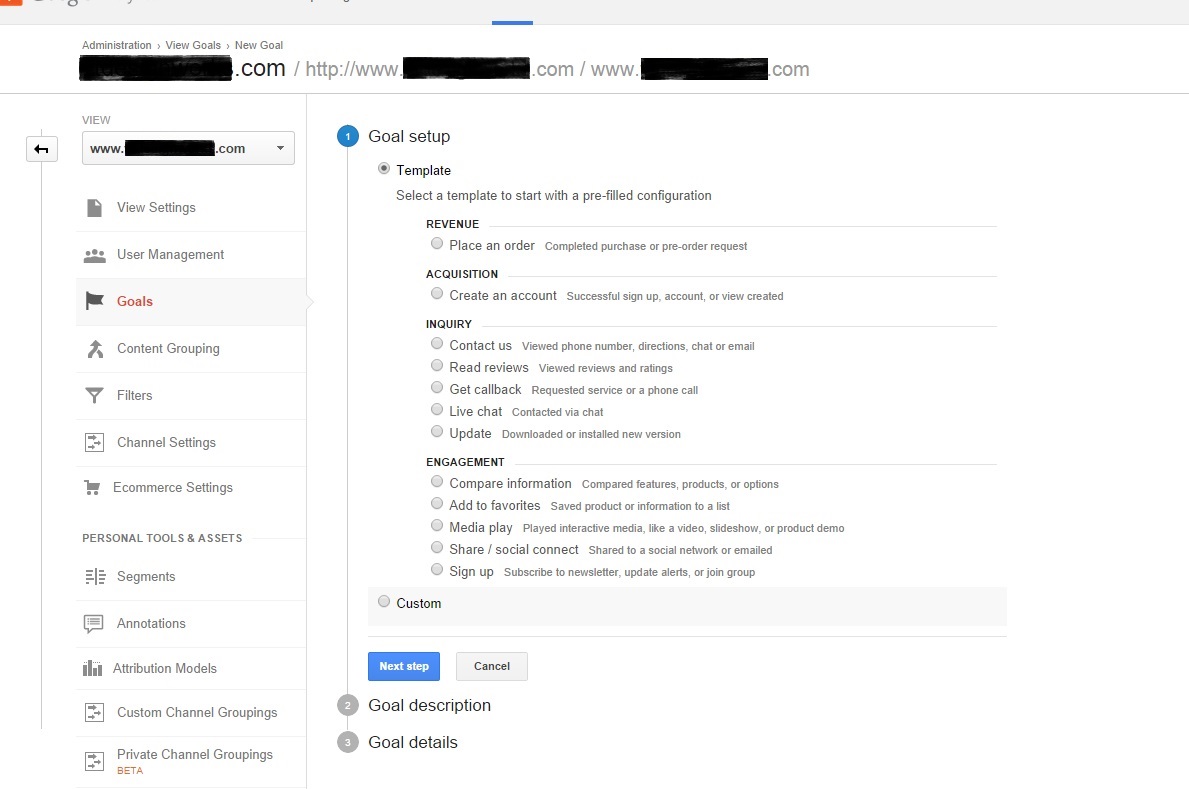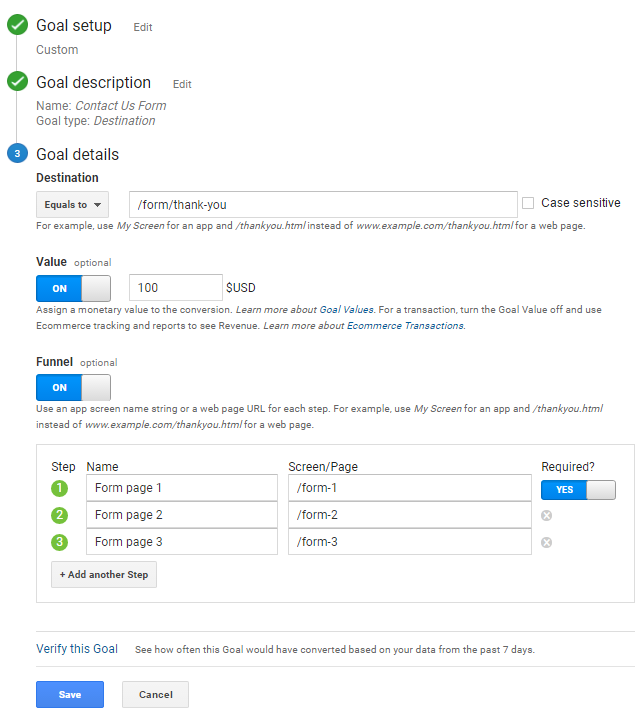Debunking Google Analytics Limitations: Discover What Information Goals Can not Track
In the world of digital analytics, Google Analytics stands as an effective tool that provides beneficial understandings into web site performance and individual behavior. Nevertheless, in the middle of its capacities, there exist constraints that usually go undetected. Understanding what Google Analytics can not track is critical for a thorough grasp of data analysis and decision-making procedures. From the complexities of user interaction with vibrant web content to the intricacies of cross-device customer journeys, these constraints shed light on locations that may continue to be obscured from typical analytics viewpoints. By unraveling these constraints, a more clear image arises, permitting even more enlightened strategies and refined insights into user involvement and conversions.

User Communication With Dynamic Web Content
User interaction with dynamic web content plays a vital duty in recognizing customer habits on web sites and optimizing the general customer experience. Dynamic content refers to components on a web page that can transform without the requirement for a complete page reload. This consists of interactive aspects such as pop-ups, sliders, forms, and video clips that reply to user actions in real-time. By tracking user interactions with vibrant content, website proprietors can get valuable insights right into user interaction, preferences, and behaviors.
Google Analytics offers different tools to track user interactions with dynamic content, such as event tracking and online pageviews. Event tracking enables you to check details individual actions, like clicking a button or enjoying a video, supplying data on how customers engage with dynamic aspects. Virtual pageviews can be used to track interactions that do not result in a brand-new page tons, offering a detailed sight of user engagement with vibrant web content. By evaluating this data, web site proprietors can make educated choices to improve customer experience and drive conversions.
Cross-Device User Journeys
Just how can modern-day analytics devices track the complex courses customers take across multiple tools in their online trips? Cross-device customer trips present a substantial obstacle for monitoring and assessing individual behavior properly. As individuals connect with apps or internet sites using numerous devices such as desktops, smart devices, and tablets, it ends up being vital to comprehend exactly how they relocate in between these systems to maximize individual experience successfully.
Google Analytics encounters restrictions in tracking cross-device individual journeys as a result of personal privacy issues and technological constraints - what data is google analytics goals unable to track. While it can supply insights into specific devices' interactions, tracking a seamless individual journey throughout several devices remains an obstacle. This limitation can lead to insufficient data and fragmented user insights, making it challenging for companies to develop a unified sight of the customer journey
To resolve this problem, organizations can use advanced analytics devices that use cross-device tracking capabilities, permitting them to get an extra all natural understanding of individual habits. By leveraging these tools, companies can link the gap in tracking cross-device customer journeys and optimize their digital methods for a seamless user experience.
Offline Conversions and Attribution
As businesses navigate the challenges of tracking cross-device customer trips, one more pivotal element to consider is the realm of offline conversions and acknowledgment in the world of information analytics. While Google Analytics offers beneficial understandings right into on-line user actions, it fails when it concerns tracking conversions that take place offline. This limitation poses a substantial challenge for organizations that have both online and offline sales channels.
Offline conversions, such as acquisitions made in physical shops or with phone call centers, are vital to comprehending the complete customer trip. Without the ability to connect these offline conversions to specific on the internet communications, organizations might struggle to properly gauge the effect of their digital advertising efforts.
To resolve this void, organizations can explore alternative remedies such as integrating CRM systems with on the internet analytics devices or making use of special promotion codes that can be mapped back to online campaigns. By bridging the gap in between online and offline information, services can gain a much more comprehensive understanding of their customers' habits and improve their general advertising strategies.
Person User Recognition
In the world of information analytics, the ability to precisely recognize individual users across various on the internet touchpoints is a critical obstacle for companies seeking to individualize and maximize their advertising strategies. While Google Analytics offers valuable insights right into customer behavior and interactions, it drops short in making it possible for the recognition of certain individuals as a result of privacy problems and technological constraints. Google Analytics makes use of unique identifiers such as cookies to track customer sessions and actions, but these do not correspond to identifying individual users in a personal feeling.

Information From Secure Pages
Regardless of the increasing prevalence of safe and secure pages on internet sites, getting data from these encrypted sources presents a special obstacle for digital analytics platforms like Google Analytics. Secure web pages, shown by HTTPS in the link, encrypt data traded in between the user's browser and the internet site's server to ensure privacy and safety. While this encryption is important for safeguarding sensitive details, it also poses limitations for tracking user behavior and event analytics information.
Google Analytics encounters challenges in accumulating thorough info from safe pages due to the file encryption methods in position. Therefore, specific information factors such as reference resources, keyword searches, and even some individual interactions may not be completely caught when individuals access a site through a secure link. This restriction can impact the accuracy and completeness of the information analysis, leading to voids in recognizing individual behavior and preferences on protected web pages.
To navigate this obstacle, electronic analysts might need to explore alternate monitoring methods or take advantage of various other devices especially made to gather insights from protected web pages. By adapting approaches to accommodate these constraints, businesses can still acquire valuable analytics in spite of the useful site constraints presented by encrypted links.
Conclusion
To conclude, Google Analytics has restrictions in tracking customer interaction with vibrant material, cross-device individual trips, offline conversions, specific customer recognition, and information from safe and secure web pages. These restrictions prevent a thorough understanding of individual actions and might lead to voids in data evaluation. In spite of its useful understandings, Google Analytics may not offer a total image of user interaction throughout various touchpoints. It is vital for Find Out More companies to be familiar with these constraints and take into consideration additional tools for a much more holistic sight of their information.
User interaction with dynamic material plays an important role in understanding customer actions on sites and maximizing the overall individual experience. By tracking user communications with vibrant content, internet site owners can acquire useful understandings into user interaction, preferences, and actions.
Google Analytics makes use of unique identifiers such as cookies to track individual sessions and actions, however these do not relate to determining individual customers in an individual sense.
As a result, specific information factors such as referral sources, keyword searches, and even some individual communications might not be fully caught when customers access a website through a safe link.In verdict, Google Analytics has restrictions in tracking individual communication with dynamic material, cross-device user trips, offline conversions, individual user recognition, and data from protected pages.